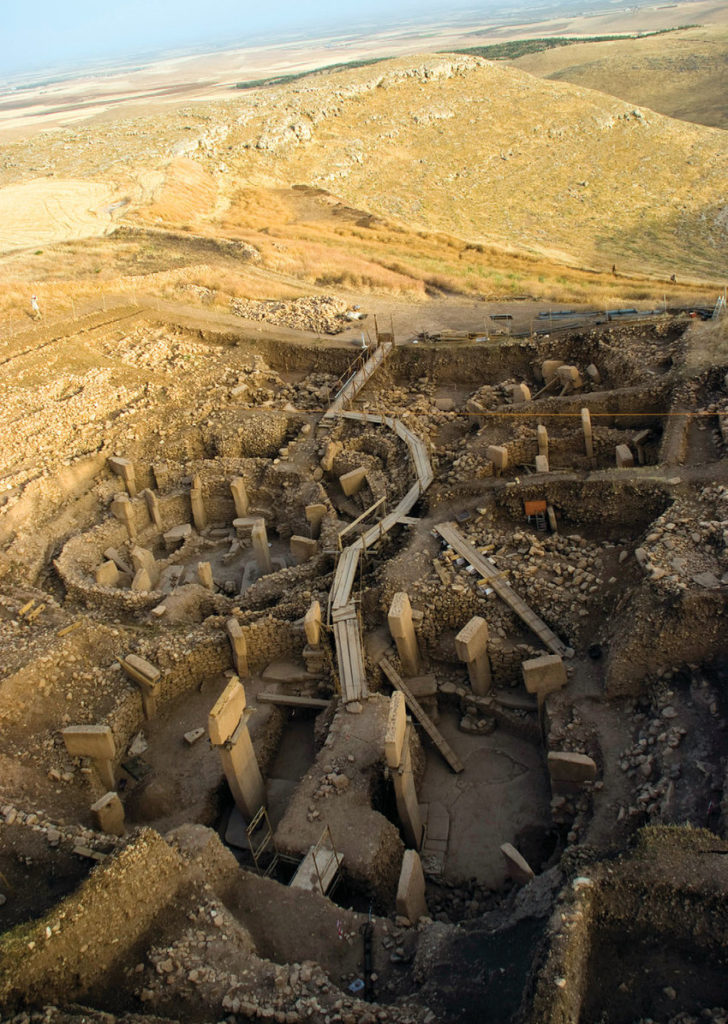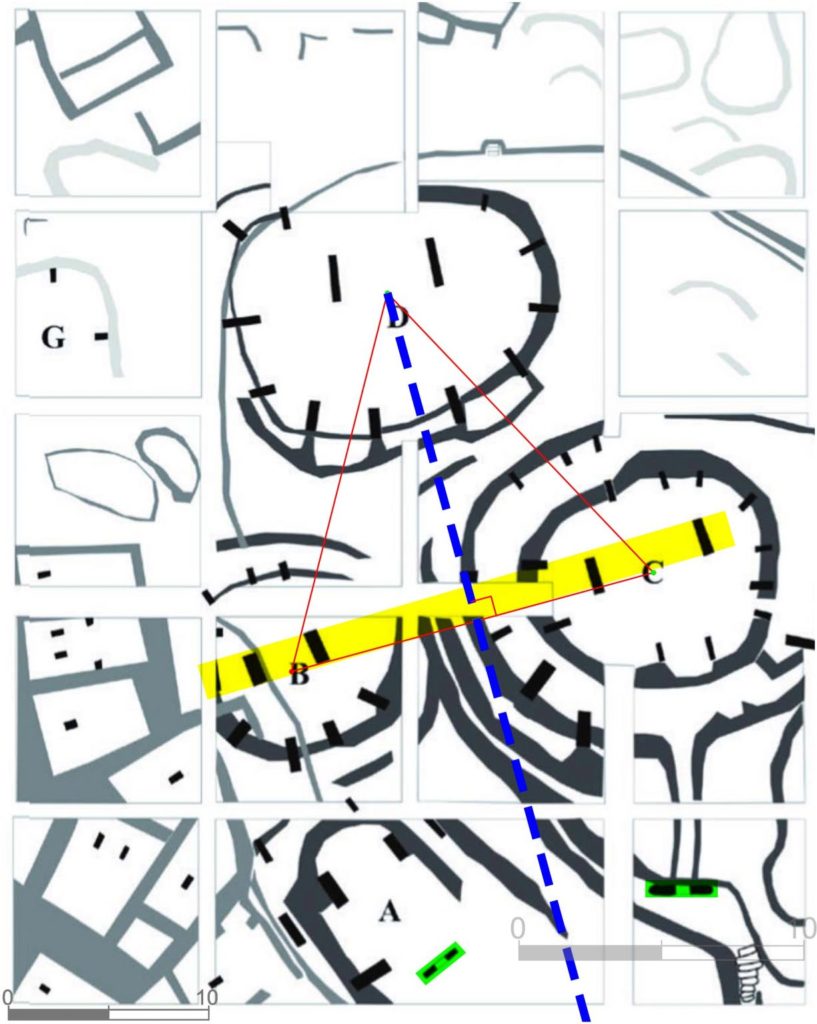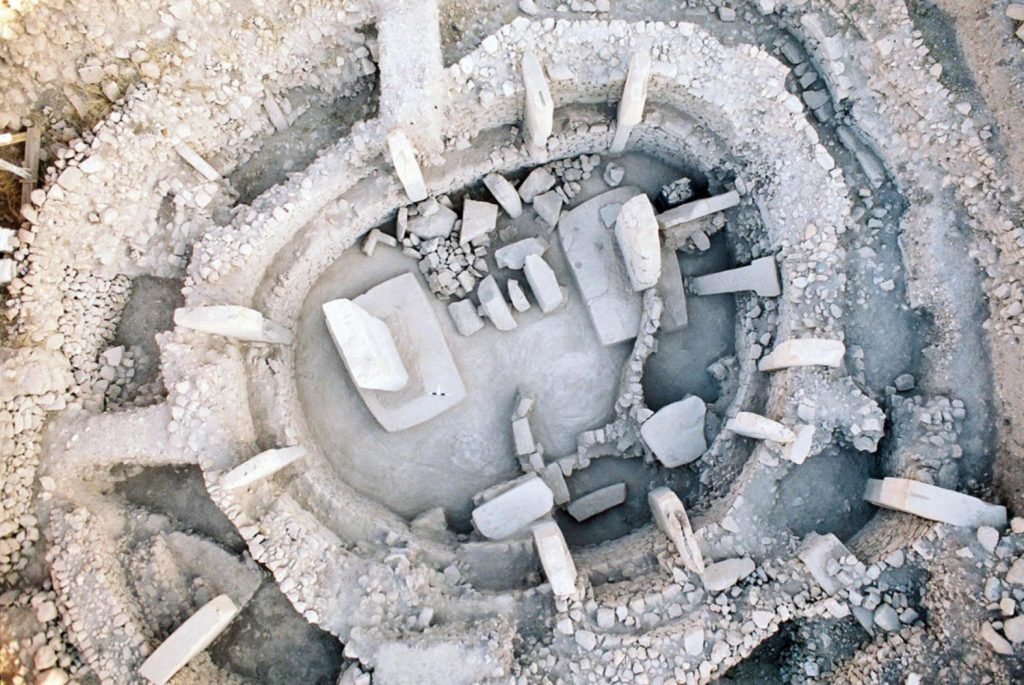Researchers Unearth the Oldest Architectural Plan of All Time

Architects: Showcase your next project through Architizer and sign up for our inspirational newsletter.
Researchers have uncovered new details behind the construction of the earliest known temple in human history. Located in what is now Anatolia, Turkey, the colossal 11,500-year-old stone Göbekli Tepe complex is one of the most important discoveries of Neolithic research.
Researchers at Tel Aviv University and the Israel Antiquities Authority used a computer algorithm to trace aspects of the architectural design process involved in the construction of Göbekli Tepe. They discovered that geometry informed the layout of its round stone structures and assembly of limestone pillars, revealing that it was initially planned as a single structure.

The main excavation area of Göbekli Tepe; Photo by N. Becker
Gil Haklay of the Israel Antiquities Authority, a PhD candidate at Tel Aviv University (TAU), and Prof. Avi Gopher of TAU’s Department of Archaeology and Ancient Near Eastern Civilizations, led the project. Their findings were published in the May volume of the Cambridge Archaeological Journal.
“Göbekli Tepe is an architectural wonder,” Prof. Gopher explained. “Built by Neolithic communities 11,500 to 11,000 years ago, it features enormous, round stone structures and monumental stone pillars up to 5.5 meters high. Since there is no evidence of farming or animal domestication at the time, the site is believed to have been built by hunter-gatherers. However, its architectural complexity is highly unusual for them.”

Geometric patterns underlying the architectural planning of a complex at Göbekli Tepe; Photo by Gil Haklay/AFTAU
Since its discovery in 1994 by German archaeologist Dr. Klaus Schmidt, Göbekli Tepe has been the subject of hot archaeological debate. Many researchers in the past have made the case that the enclosures at the main excavation area were constructed over time. However, this new research says otherwise, highlighting that an underlying geometric pattern informed the design.
“The layout of the complex is characterized by spatial and symbolic hierarchies that reflect changes in the spiritual world and in the social structure,” explained Haklay.
This discovery is significant because it was previously assumed that certain planning capabilities and practices, such as the use of geometry and creation of floor plans, emerged much later than the period Göbekli Tepe was constructed.

Göbekli Tepe’s enclosure; Photo by Gil Haklay/AFTAU
“This research introduces important information regarding the early development of architectural planning in the Levant and in the world,” states Prof. Gopher. “It opens the door to new interpretations of this site in general, and of the nature of its megalithic anthropomorphic pillars specifically.”
The researchers intend to investigate the architectural remains of other Neolithic sites throughout the Levant.
Architects: Showcase your next project through Architizer and sign up for our inspirational newsletter.
The post Researchers Unearth the Oldest Architectural Plan of All Time appeared first on Journal.
, Nathaniel Bahadursingh, read more Journal https://bit.ly/2yopAKf
Yorumlar
Yorum Gönder